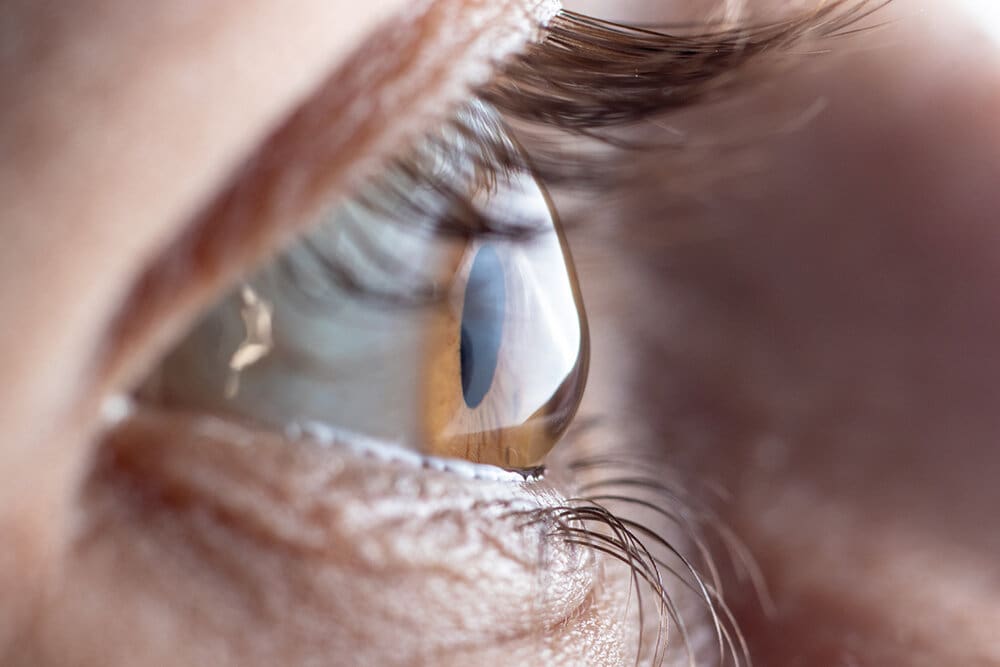What is Keratoconus?
Keratoconus is a progressive disease of the cornea; this is the clear domed front surface of the eye. It can cause thinning of the cornea, which gradually changes in shape, becoming more conical, rather than spherical. These changes cause short-sightedness (myopia), astigmatism and increased irregularity in shape, which impacts on the focus and the quality of your vision. In advanced stages of keratoconus, the cornea may develop scarring which further reduces the passage of light into the eye and subsequently affects quality of sight. Keratoconus can affect both eyes and can cause vision loss if left untreated, so it is important to consult with an eye specialist such as Vision Care Clinic if you have any concerns.
What are the causes of Keratoconus?
The exact cause of Keratoconus is unknown, although it’s thought contributing factors may have links to a genetic predisposition or environmental factors like ultraviolet light exposure, persistent eye rubbing or trauma to the eye. Some ethnic groups may also be at a higher risk of developing keratoconus. The weakening of the cornea causes it to change shape as you age, and individuals can present symptoms even as children and teenagers.
What are the symptoms of Keratoconus?
Keratoconus is more common in younger patients and usually starts to appear in people in their late teens or through their twenties. Early symptoms include slight blurring, doubling or shadowing of vision, which cannot be corrected with glasses or contact lenses. As the condition develops, other symptoms can include:
- Blurred or distorted vision.
- Increased sensitivity to bright light and glare, which can cause problems with night driving.
- A need for frequent changes in eyeglass prescriptions.
- Sudden worsening or clouding of vision.
Keratoconus typically affects both eyes but may only be noticeable in one eye at first. It can affect one eye more than another and become more distorted over time.
How serious is Keratoconus?
If left untreated, Keratoconus may have severe effects on a person’s vision. Only a very small percentage of patients will go on to require advanced surgical intervention, such as a corneal transplant if the Keratoconus is severe or left untreated. It is always very important to seek assistance from experts as early as possible to stop the progression of the disease.
What treatments are available for Keratoconus?
Keratoconus cannot be treated with eye drops or medication; however, some patients are able to manage purely through the use of contact lenses, often guided by a specialist in contact lens fitting and management. However, there are two additional forms of Keratoconus management available. These options aim to either stop it from getting worse or alternatively, halting the progression of the disease and also improving vision.
A treatment called collagen crosslinking is used to stop the progression of Keratoconus. This treatment plan uses a combination of drops called riboflavin with vitamin B2 and ultraviolet (UV-A) light. The drops and light interact with each other, resulting in the fibres within the cornea to bond more tightly and increase the corneal strength.
Overall, collagen crosslinking is successful in preventing further progression of Keratoconus in over 93% of people treated. Without the crosslinking treatment, at least 20% of all patients with keratoconus will eventually require a corneal transplant.
Are there any new treatments available for keratoconus?
A more recent development in treatment for keratoconus is the option to not just halt the progression of the disease but to also correct the visual aberrations caused by the Keratoconus. Thanks to advancements in diagnostic corneal mapping and excimer laser treatment profiling, many patients are now able to have their corneas reshaped, usually prior to the crosslinking procedure. This procedure improves the vision first and then the cornea is strengthened to lock in the effects of the laser. This particular treatment combination is successful for approximately 80-95% of patients.
Will the Keratoconus procedure cure the disease permanently?
For over 93% of Keratoconus patients, corneal cross linking can halt the progression of the disease by strengthening their corneal fibers. There are also simple things that can be done to help, like stopping eye rubbing; which is vitally important, even after collagen crosslinking.
Currently there is no cure for Keratoconus. However, there are safe and effective methods of halting the progression of Keratoconus and improving quality of vision dramatically and in an effective manner. The best action is early detection and treatment.
If you think you may have Keratoconus, what are the next steps for you?
Your first step would be a detailed consultation with our experienced Ophthalmologists here at Vision Care Clinic. It’s important to understand that no two eyes are the same and often the Keratoconus in one eye is more progressed than the other, so we will need to undertake a careful clinical analysis and scanning before advising the best treatment plan.
Treatments plans for Keratoconus at Vision Care Clinic are specifically tailored for every patient. Our Ophthalmologists will ensure that you receive the best possible outcome from the suggested treatment.
To find out more about our Keratoconus treatments, why not speak to our team on 0117 905 7722 or fill out an online enquiry form.
by David Silvester


